Bad weather can hit at any time of the year, particularly during the winter months. From ice and frost right through to snowstorms, there’s often the threat of extreme weather looming.
The good news is that we normally know it’s coming. Which, from an insurance point of view, gives us a head start. Don’t leave it until the last minute to check that the maintenance on your club and its buildings is up to date.
Here’s our advice on keeping your club claim free this winter…
Check your roofs & gutters
It goes without saying that roofs and gutters are one of the areas most at risk during the bad weather. Most insurance policies will include conditions about the maintenance of your roof, whether the weather is bad or not. They will insist that roofs, and especially flat roofs, are inspected regularly (once every two years or so) by a qualified builder or property surveyor. Any defects identified must be repaired immediately. All inspections must be recorded and retained and used as evidence in the event of a claim.
Guttering should be checked for blockages by a competent person. These checks should be made every six months, and after every storm. It’s important that when the checks are made, they are done so by a professional, or a member of your staff who is properly trained and using well-maintained equipment.
Let your insurer know about increased stock
If your club is in a remote area, or you’re concerned that the bad weather will slow down supply chains, it’s possible that you might over-order and stockpile non-perishables.
If you do this, you will need to review your Sums Insured to ensure they are still adequate. If you’re in doubt, you should contact your insurer or broker for advice.
Be aware of additional risks
With additional patrons in the venue it is vital that your ‘housekeeping’ tasks do not fall by the wayside. For example, slips, trips and falls are more prevalent during bad weather. Make sure any un-carpeted areas inside are well-managed as they can become hazardous as people drag snow and water into the club on their shoes.
Checklists can be extremely useful in monitoring things like glass collection, toilet cleaning and spillages, they can also be used as evidence against spurious claims, so try to make sure that checklists are completed at least every half an hour. It is useful if the checklists make a note of action taken such as cleared spillage, swept broken glass etc rather than just a simple tick in a box.
If you do not currently have the necessary logs or documentation to record such information, we can provide master copies for all eventualities.
Remember a claimant has three years from the date of incident in which to pursue a claim – you MUST keep your documentation for this length of time as a minimum.
Prepare for increased takings
Extra patrons will hopefully lead to an increase in profits. It is important to review your Sums Insured to ensure that the amount kept in the safe is adequately covered. In addition, monies not kept in a safe out of business hours may only be covered for a designated amount e.g. £250 or £500. Therefore it might be necessary to bank takings more regularly – because failure to do so might result in not being paid in full in the event of a claim.
Look after your external property
With slippery footpaths and stairwells, the outside areas of your club have to be well-managed.
You should also double check your insurance policy and make sure you’re happy with your cover. Many policies specifically exclude moveable property left in the open such as nets, covers etc. Other policies may give restricted cover; excluding perils such as wind, rain, hail, sleet, snow, floor or dust so check your policy schedule to ensure that you have the cover you require.
Look after your heating systems
Have your water tanks, apparatus or pipes adequately lagged by a qualified plumber. Ensure that the heating system comes on whenever the temperature at the coolest point in the building drops to 4c. If you don’t, you may find you’re not covered in the event of a burst pipe.
Think twice if you’re planning on bringing in any additional heating. Most insurance policies exclude you from using portable heating appliances of any kind other than in office areas. If appliances are used in the approved areas, they must have a valid PAT testing certificate and be unplugged when not in use.
Do your due diligence
It may seem obvious, but make sure that all doors and windows are fully closed and secure when the worst of the weather hits. You’d be amazed at how much flood damage, for instance, occurs when a toilet window is left open.
If heavy wind is on its way, our advice is simple: secure anything loose, and bring outside furniture inside. Limit the number of people who are standing in uncovered space around your club.
Take responsibility for gritting
There are legal responsibilities, and there are moral responsibilities. Technically, you’re only responsible for land and property which is yours. It is the council’s job to make sure that paths and pavements are safe for people to walk on.
Occupiers have a legal duty under The Occupiers’ Liability Act 1957 to take reasonable care to see that visitors are reasonably safe whilst using their premises. This duty can extend to making sure that paths, walkways and other areas are clear of potential hazards caused by wintery conditions.
Yes, the council will grit certain areas. But you shouldn’t leave any area of your club ungritted. You should be generous with the grit used and make note of where and when it is applied (without such records insurance companies might not provide indemnity). Pay special attention to outdoor stairways and entrance steps.
Who is responsible for snow and ice – the landlord or the tenant?
The ownership and responsibility for maintaining common parts of property are often not completely clear. The responsibilities are further confused by the Occupiers’ Liability Act, which can theoretically see either the landlord or the tenant, or both, defined as the legal occupier of a property in the event of a claim.
Where a property is let as a whole to a tenant, then it is unlikely that the landlord will have any service obligations in the lease. In such cases, repair and maintenance is likely to be the responsibility of the tenant.
It’s common for a landlord to retain ownership of part of an estate when leasing to tenants. In this case, while a standard lease is unlikely to contain any reference to ice and snow clearance as a specific service, it is generally the case that the lease will contain a ‘sweeper’ clause. This type of clause will oblige a landlord to provide services of any kind in the interests of good estate management. Whether the management of ice and snow can fall under such a clause depends very much on an individual basis.
If a landlord has granted a right of way to the tenant (and more than likely also their visitors and employees) over the estate areas, then there will be an obligation to ensure that the right of way can be exercised safely. That said, this doesn’t mean that a landlord has to clear every inch of every possible route of access.
A landlord will struggle to maintain gritting and clearing all access routes. A practical solution would be for a landlord to facilitate the removal of snow by providing the tenant with the necessary equipment, along with a regularly restocked grit bin.
Always try to keep your visitors safe
Even if not obliged to clear snow and/or ice under the property’s lease, a landlord or tenant may still find themselves legally liable under the Occupiers’ Liability Act. It imposes a duty on the ‘occupier’ of a property to take reasonable care in all circumstances to ensure that visitors are safe. However, the term ‘occupier’ is not defined in statute, with courts instead deciding on who is the occupier on a case-by-case basis. Two parties can be the relevant ‘occupier’ at the same time if a sufficient degree of control can be attributed to both.
In short, both landlords and tenants should take steps to clear ice and snow, and should always warn visitors of the danger of slipping on ice in bad weather.
Follow the advice of the Health and Safety Executive
To reduce the risk of trips and slips on ice, frost or snow, the HSE advises that a business needs to assess the risk and put a system in place to manage it. It is suggested that you must:
- Identify the outdoor areas used by pedestrians most likely to be affected by ice
- Monitor the temperature, and take preventative measures
- Put a procedure in place to prevent an icy surface forming and/or keep pedestrians off the slippery surface
- Remove warning cones once the hazard has passed or they will eventually be ignored
Do you need further advice, or want to discuss your insurance policy? Get in touch with the Club Insure team.






